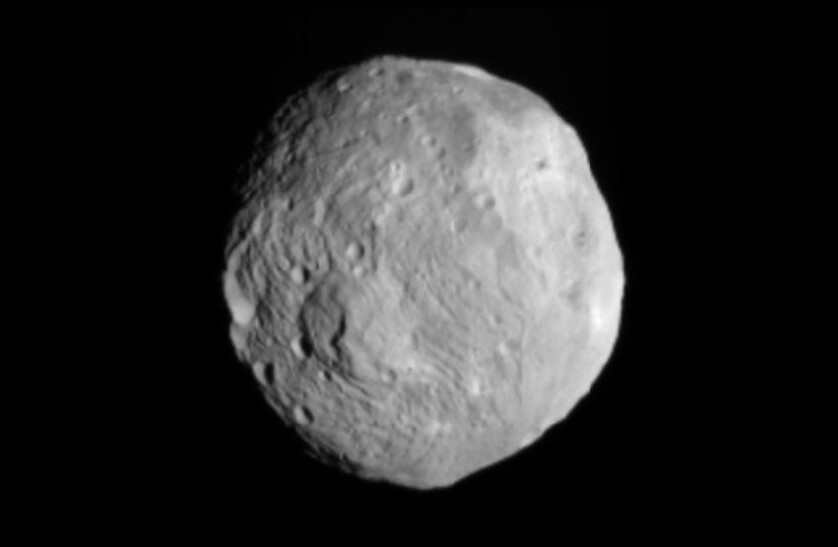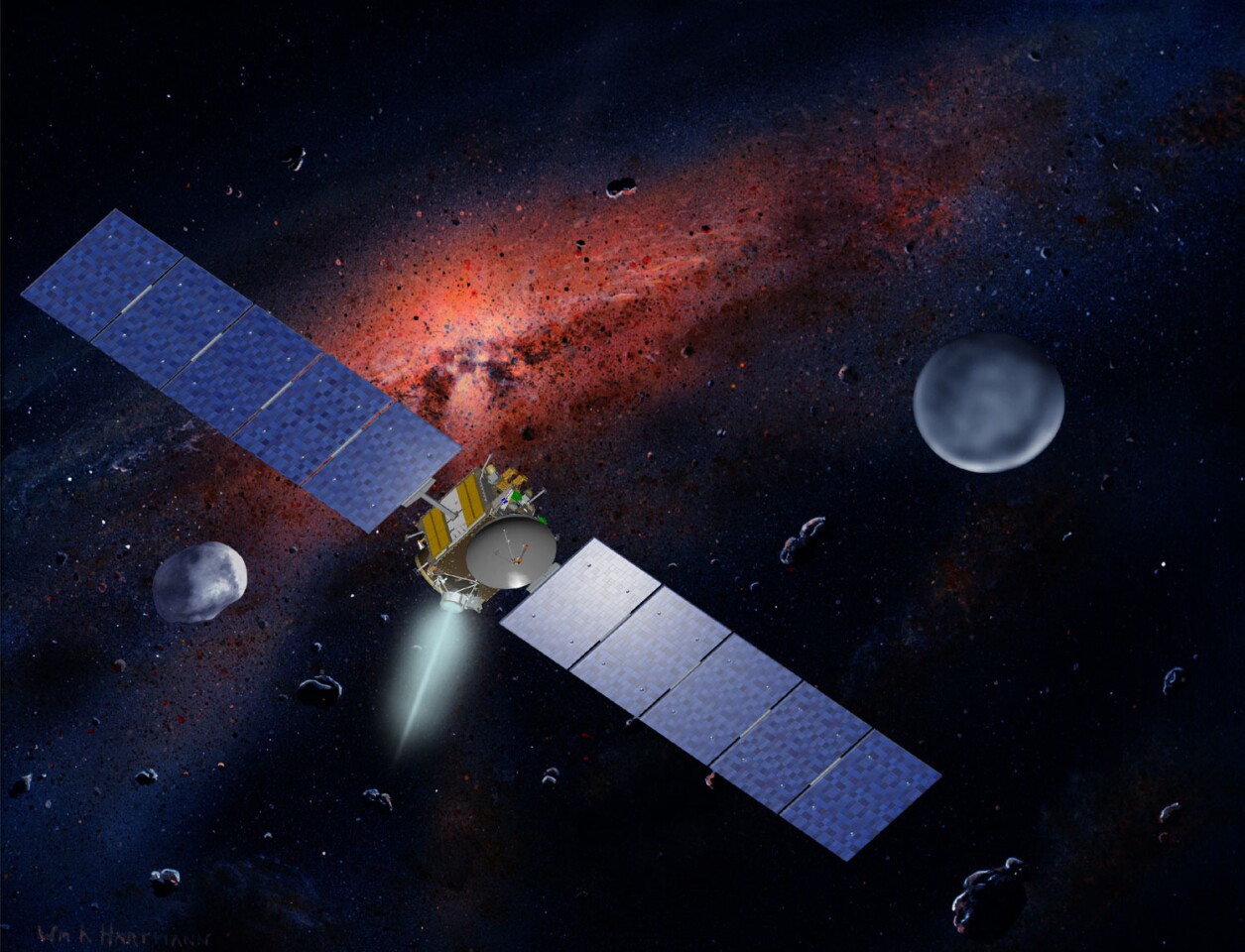On Saturday, NASA'a Dawn spacecraft entered orbit around the asteroid Vesta, becoming the first probe ever to enter orbit around an object in the main asteroid belt between Mars and Jupiter. Dawn will study Vesta for a year before heading for the dwarf planet Ceres. With previous multi-target missions, such as the Voyager program, considered rapid planetary flybys, Dawn is also set to become the first spacecraft to enter orbit around one extraterrestrial body before continuing under powered flight to a second.
Dawn launched on September 27, 2007, and belongs to NASA's Discovery Program founded in 1992 to develop technologies to enable "faster, better, cheaper" planetary missions. Its study of two large bodies in the asteroid belt is aimed at providing information on the dawn of the solar system - hence its name. Data collected on the Dawn mission will also be crucial for future missions aimed at sending astronauts to an asteroid - something President Obama has directed NASA to do by 2025.

The exact time of the orbiting milestone isn't yet known as it depends on Vesta's mass and gravity, which until now has only been estimated. However, now that it is in orbit, Dawn will take more accurate measurements of Vesta's gravity, which will allow a more accurate timeline to be calculated.
Vesta and Ceres are baby planets whose growth was interrupted by the formation of Jupiter. They were chosen for investigating in detail as they are the two most massive protoplanets remaining intact since their formation and because of their contrasting makeup. Ceres is very primitive and wet (icy), while Vesta is evolved and dry (rocky), so examining both should help scientists understand the formation of both rocky planets and icy bodies in our solar system and under what conditions a rocky planet can hold water.
Dawn's science instrument suite consists a framing camera (FC), which is also vital for navigation, a visual and infrared spectrometer (VIS), and a gamma ray and neutron detector (GRaND). Together these instruments will measure the shape, surface topography and tectonic history, elemental and mineral composition and seek out water-bearing minerals on the two bodies.
After completing its observations of Vesta, Dawn is scheduled to depart Vesta for Ceres in July 2012, where it should arrive in February 2015. On the journey, Dawn is powered by a 10 kW triple-junction photovoltaic solar array and propelled by three DS1 heritage ion thrusters, which fire one at a time.

These thrusters work by using an electrical charge to accelerate ions from xenon fuel to a speed 10 times that of chemical engines. Although Dawn's ion propulsion system provides only very small acceleration - about the weight of a piece of paper in your hand - it is effective for Dawn's journey to the asteroid belt because of the long period of time over which the spacecraft accelerates.
At maximum thrust the engines use only about 3.25 milligrams of xenon per second (about 10 ounces over 24 hours), which means Dawn only needs to carry 425 kg (937 lb) of xenon propellant for its mission. Conventional chemical propulsion would have required much more fuel and extra mass, which would have made the mission prohibitively expensive.
"Today, we celebrate an incredible exploration milestone as a spacecraft enters orbit around an object in the main asteroid belt for the first time," NASA Administrator Charles Bolden said. "Dawn's study of the asteroid Vesta marks a major scientific accomplishment and also points the way to the future destinations where people will travel in the coming years."






